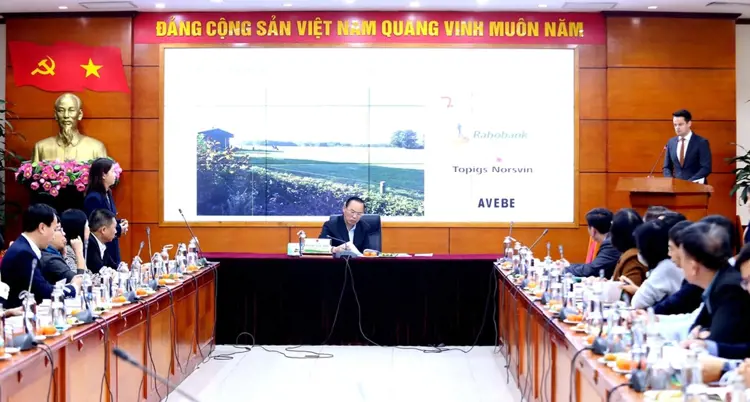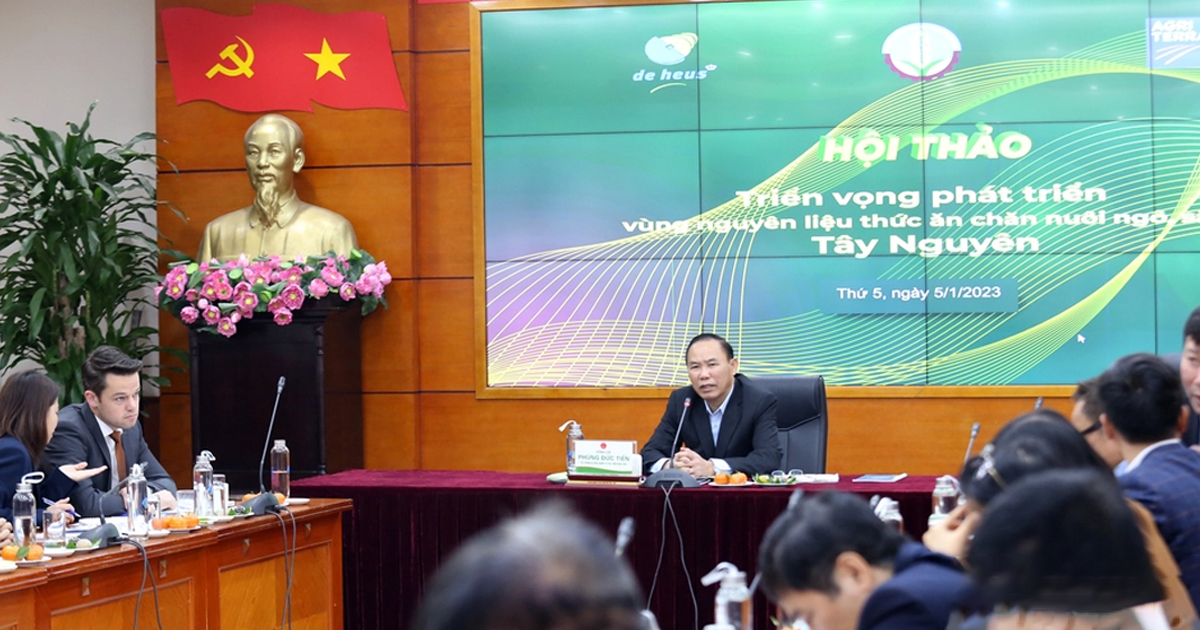Workshop “Prospects for development of animal feed ingredient growing areas” organized by Agriterra
On the morning of January 5, 2022, De Heus, in collaboration with Vietnam’s Ministry of Agriculture and Rural Development (MARD) and the Netherlands Cooperative Development Organization (Agriterra), successfully organized the workshop "Prospects for development of corn and cassava growing areas for animal feed production in the Central Highlands” chaired by Mr. Phung Duc Tien, Deputy Minister of Agriculture and Rural Development.

Addressing at the workshop, Deputy Minister Tien shared that: “Vietnam is an agricultural country that has 7 ecological regions and is known as the world’s largest or second largest exporter of several agricultural products. Yet, Vietnam is still spending billions of dollars to import all kinds of feed ingredients. Such dependence is expected to further last long if the country fails to have well-balanced strategies and promote joint and drastic actions of stakeholders, including government, businesses, organizations, scientists and producers. MARD submitted to the Government the draft decree on investment policies to support livestock rising, aimed to provide incentives to locally drive production of animal feed ingredients, thus gradually reducing dependence on imports.”

According to Mr. Willemink Arno - Operations Director of De Heus Vietnam: De Heus's feed mills require about 3.2 million tons of raw ingredients annually. These include 800,000 to 1 million tons of corn grain (95% of which are imported for VND 6,700 - 9,250 billion/year) and 100,000 - 300,000 tons of cassava chips (75 - 80% of which are imported). Therefore, Vietnam presents great potential to produce feed ingredients locally.

However, research by De Heus and its partners shows that Vietnam's domestic corn grain has unstable moisture content and quality. Besides, a smaller size, higher proportion of damaged grain and presence of foreign bodies, toxins and molds are also its drawbacks. Harvesting cassava chips in the rainy season enhances mold growth while the incidence of sand and dust is as high as 2%. In order to develop feed ingredient growing areas, I believe that Vietnamese corn should be able to compete with South American corn in terms of price and quality. Also, Vietnamese farmers should make better profits by growing more corn and cassava.”
“Agriterra’s research and De Heus’s experience have shown that farmers are now being paid at a price much lower than De Heus’s unit payment to end buyers. Collectors and agents are having a portion of the profits. The most important role of agents is to provide access to seeds, fertilizers and credit,” added Mr. Willemink Arno.
Besides, De Heus also believes that a cooperative can also act as a collector or agent. Therefore, it is suggested by De Heus that MARD improve the odds of success for cooperatives by providing tax incentives and low-interest government funding so that farmers can have access to needed finances. Agriterra, MARD and De Heus will further discuss how these options can be provided.
De Heus’s production requires 70,000 to 100,000 tons of corn per month. More attention has been given to cassava thanks to growing cassava starch production and exports and De Heus will focus on using cassava by-products. In addition, De Heus will further explore more feasible options such as investment in corn drying. This will be facilitated as corn production grows.
Such upgrading and re-imagination of value chains will help generate farmers’ income and build stable feed ingredient growing areas for businesses with better competitive prices.
(By Nong nghiep Viet Nam newspaper)
